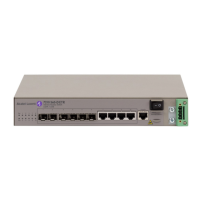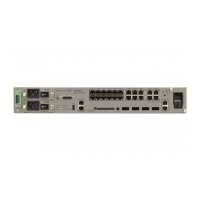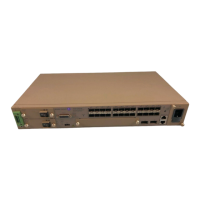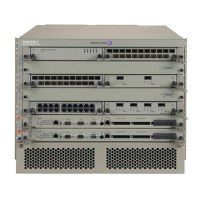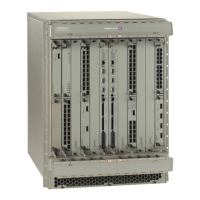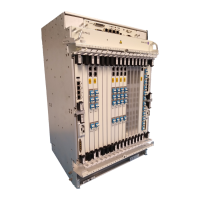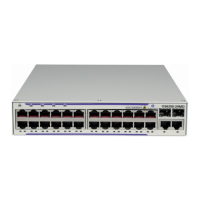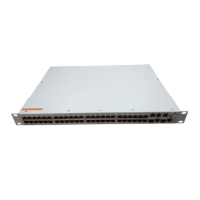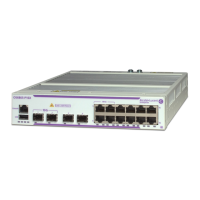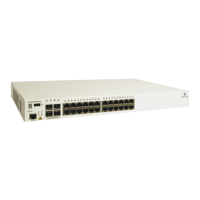MPLS and RSVP
7210 SAS M, T, X, R6, Mxp MPLS Configuration Guide Page 29
MPLS Transport Profile (MPLS-TP)
Note: MPLS-TP is supported on 7210 SAS-R6 and 7210 SAS-T network mode devices. It is not
supported on 7210 SAS devices configured in access-uplink mode.
MPLS can be used to provide a network layer to support packet transport services. In some
operational environments, it is desirable that the operation and maintenance of such an MPLS
based packet transport network follow operational models typical in traditional optical transport
networks (For example, SONET/SDH), while providing additional OAM, survivability and other
maintenance functions targeted at that environment.
MPLS-TP defines a profile of MPLS targeted at transport applications. This profile defines the
specific MPLS characteristics and extensions required to meet transport requirements, while
retaining compliance to the standard IETF MPLS architecture and label switching paradigm. The
basic requirements are architecture for MPLS-TP are described by the IETF in RFC 5654, RFC
5921 and RFC 5960, in order to meet two objectives:
1. To enable MPLS to be deployed in a transport network and operated in a similar manner
to existing transport technologies.
2. To enable MPLS to support packet transport services with a similar degree of
predictability to that found in existing transport networks.
In order to meet these objectives, MPLS-TP has a number of high level characteristics:
• It does not modify the MPLS forwarding architecture, which is based on existing
pseudowire and LSP constructs. Point-to-point LSPs may be unidirectional or bi-
directional. Bi-directional LSPs must be congruent (that is, co-routed and follow the same
path in each direction). The 7210 SAS supports bidirectional co-routed MPLS-TP LSPs.
• There is no LSP merging.
• OAM, protection and forwarding of data packets can operate without IP forwarding
support. When static provisioning is used, there is no dependency on dynamic routing or
signaling.
• LSP and pseudowire monitoring is only achieved through the use of OAM and does not
rely on control plane or routing functions to determine the health of a path. For example,
LDP hello failures, do not trigger protection.
• MPLS-TP can operate in the absence of an IP control plane and IP forwarding of OAM
traffic. In 7210 SAS releases, MPLS-TP is only supported on static LSPs and PWs.
The 7210 SAS supports MPLS-TP on LSPs and PWs with static labels. MPLS-TP is not supported
on dynamically signalled LSPs and PWs. MPLS-TP is supported for EPIPE, and EPIPE Spoke
SDP termination on VPLS. Static PWs may use SDPs that use either static MPLS-TP LSPs or
RSVP-TE LSPs.
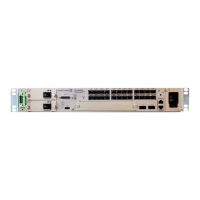
